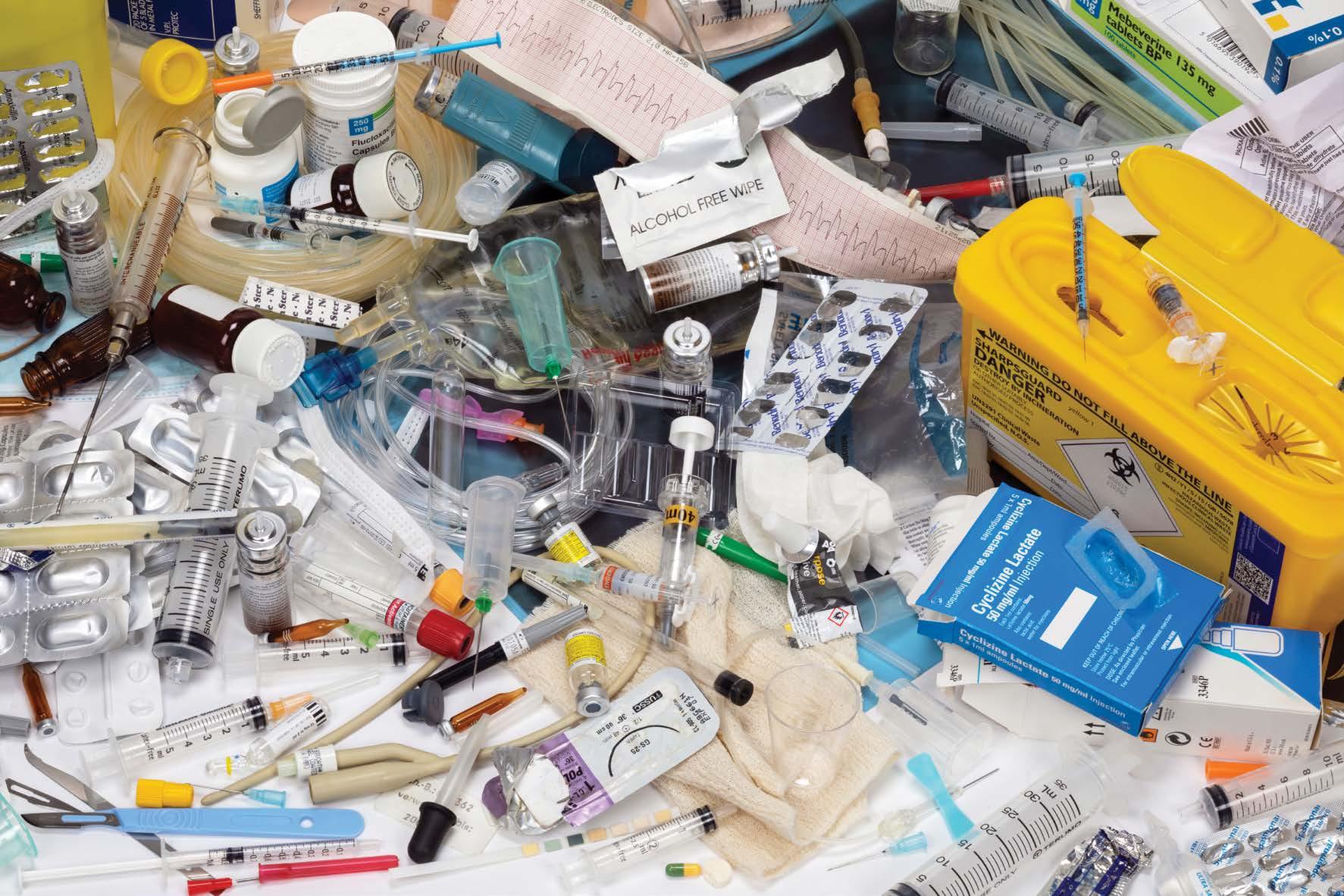
3 minute read
Let’s talk sustainability in the medical sector
LET’S TALK SUSTAINABILITY & SINGLE-USE IN THE PHARMA & MEDICAL SECTORS
The World Bank estimates that the healthcare sector makes up approximately 5% of global carbon emissions – to which the European Union contributes significantly. In recent years, however, the sector has witnessed a tangible shift in mentality when it comes to environmental sustainability.

George I’ons is Head of Product Strategy and Insights at Owen Mumford Pharmaceutical Services.
As regulators, hospital systems, governments and consumers increasingly demand proof of environmental credentials, sustainability has quickly become an essential part of the medical device manufacturer’s corporate agenda.
When it comes to meeting climate objectives, the healthcare sector faces a unique challenge that other sectors do not: manufacturers must reconcile a reduction in waste and disposables with the need to ensure the safety of healthcare workers and patients alike. This balancing act became particularly evident with the onset of the global pandemic and the ensuing need for more personal protective equipment (PPE).
Today, as the vaccine rollout gathers pace, vaccination material such as glass vials and syringes are further contributing to the growing amount of medical waste. While we know that single-use plastics are harmful to the planet, these medical products and devices are designed in accordance with regulations that specifically discourage reuse for infection-control reasons. As a result, 90% of medical device waste is made up of disposable, one-timeuse products or components.
What Happens to These Single-Use Products?
In Europe, medical devices are typically disposed of via incineration which releases nitrous oxide and well-known carcinogens, though these are controlled via strict emission limits. Alternative solutions include sterilisation, but this does not necessarily curb environmental

impact given that sterilisation often deploys harmful chemicals such as glutaraldehyde or ethylene oxide, and demands high energy volumes. This leaves manufacturers with three viable routes to tackle the sustainability issue: choosing recyclable plastics, optimising manufacturing processes, and rethinking product design.
George I’ons, Head of Product Strategy and Insights, Owen Mumford Pharmaceutical ServicesThe author George I’ons is Head of Product Strategy and Insights at Owen Mumford Pharmaceutical Services.

Careful Consideration of Materials
Safely reusing the device itself may not be feasible, especially as this option comes with additional regulatory requirements under the EU Medical Device Regulation. However, it may be possible to reprocess the materials in the device.
Some materials, like PVC for example, can be recycled several times without losing their critical properties. There is scope to make greater use of more easily recyclable plastics, such as renewable polyethylene (PR) and polyethylene terephthalate (PET). However, to ensure that these products are then recycled, closed-loop systems must be put in place to allow waste materials from hospitals and patients to be brought back into the recycling process. The Manufacturing Process Up Close
Manufacturers can also minimise their carbon footprint by evaluating the energy efficiency of their plants and ensuring that all energy comes from clean renewable sources. Reducing water use, optimising logistics and reducing their use of polluting chemicals can make a difference to manufacturers’ overall carbon output. This is an attractive route for any business given the energy savings that trickle down from implementing such changes. New generation manufacturing technology can also help to reduce energy consumption by streamlining processes and the use of resources. These productivity gains and energy savings can contribute towards financing the whole sustainability programme, or even making the investment cost neutral.
A Closer Look At Product Design
Sustainability should be a priority at the very beginning of a product’s life cycle, right from concept development. For instance, reducing the number of components at the device design stage can both simplify the manufacturing process and reduce waste and transport impact. Likewise, products with minimal components that are easy to disassemble will also facilitate recycling. By selecting more environmentally friendly materials, toxic air emissions during disposal or incineration can also be minimised while cutting waste processing costs.
It is likely that parenteral or other invasive products will continue to include a disposable component in order to meet safety and hygiene regulations. However, factoring in sustainability considerations when designing devices, planning manufacturing processes, and assessing end-of-life recycling options could play a big part in making the healthcare industry more sustainable. n
Read Owen Mumford Pharmaceutical Services’ report on this topic – ‘Sustaining the Pace: Three perspectives on how sustainability is being achieved in the medical device market’. www.ompharmaservices.com










